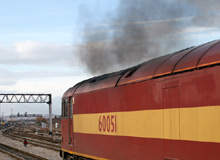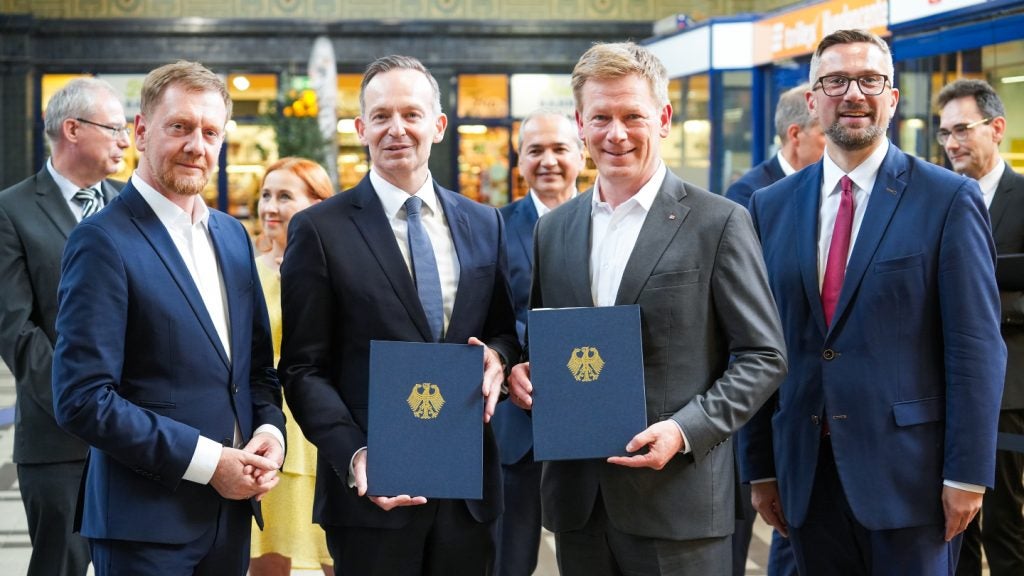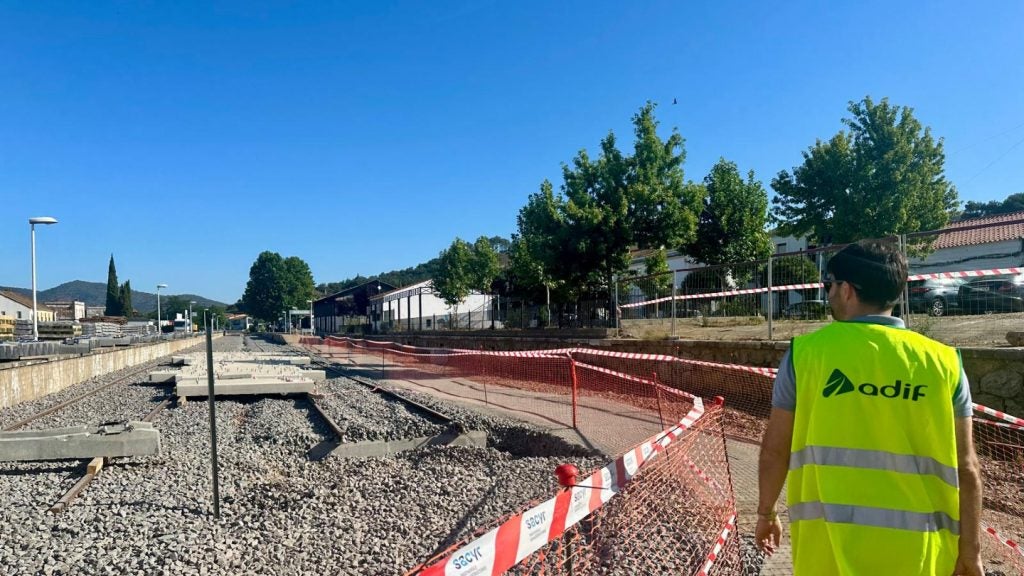
Early evening, 31 July 2008, Erstfeld station in Switzerland: two southbound freights occupy platforms with a third held in a running loop. Made possible by the bidirectional infrastructure, a northbound freight – which like the others is of great length – gets threaded between a Milan-bound Cisalpino and Locarno-Zurich IR passenger service.
Accentuated by the slow climb of the steep, sinuous north ramp to the Gotthard tunnel, this intense and impressive operation represents much about the rail freight scene in Europe and in other parts of the world.
Even in uncertain economic times there are millions of tonnes of basic commodities needing to be shifted from field, quarry or mine; finished goods waiting to be moved between producers and consumers; a lot of liquids making land journeys not by pipeline – and, like the Mercedes vans entirely filling one of the Erstfeld freights – any number of road vehicles that ironically are not suited to mass movement by road.
The environmental high ground
As consciousness about climate change shifted from minority concern to mass awareness, the perception of rail as an environmentally friendly alternative has grown. And other factors have benefited rail in the freight industry. In an effort to reduce labour costs production has been shifted from the main markets (for example, manufacturing relocated to China or Eastern Europe) and the supply chains of finished goods have, accordingly, grown longer.
Similarly, increased raw material costs have encouraged extraction opening up in hitherto economically marginal and remote areas.
How well do you really know your competitors?
Access the most comprehensive Company Profiles on the market, powered by GlobalData. Save hours of research. Gain competitive edge.

Thank you!
Your download email will arrive shortly
Not ready to buy yet? Download a free sample
We are confident about the unique quality of our Company Profiles. However, we want you to make the most beneficial decision for your business, so we offer a free sample that you can download by submitting the below form
By GlobalDataUK infrastructure operator Network Rail (NR) says that even with relatively short train lengths and the restrictive British loading gauge, one ‘typical’ freight train can handle the equivalent of 50 HGV movements.
Other NR-claimed benefits include an 80% reduction of carbon dioxide per tonne carried compared to road transport, as well as similar reductions of other harmful outputs and a negligible contribution to accidental fatalities. Goods vehicles are involved in 17% of UK road deaths.
In the US, the Association of American Railroads (AAR) which represents major freight railroads of the US, Canada and Mexico says that a North American intermodal train will shift a load that would need 280 road trucks. Of growing significance as fuel prices have soared in 2007/8, the AAR also points out that using rail for freight is three times more fuel efficient than by road.
Trouble on the tracks
Even if with plentiful railheads, there will frequently be road haulage involved somewhere in the journey. For isolated systems operating over short distances as on the two networks on the island of Ireland, rail freight looks a doomed species, however great its perceived environmental gains. For larger systems and those where cross-border operation is commonplace – as in much of western Europe – the opportunity for rail freight lies not so much in winning the entire business from road but more in maximising the distance of the freight flow after or before road transfer takes place.
Apart from wider environmental costs, rail is not always the cheapest way to move freight for the customer. This condition underpins the UK’s Freight Facilities Grant Scheme and the Rail Environmental Benefit Procurement Scheme – state-funded incentives to respectively create handling resources or to compensate users of rail who could otherwise pay less if using road-based alternatives.
For transit countries on international freight corridors such as Austria or Switzerland, the national support of Rollende Landstrasse (complete road-freight vehicles aboard purpose-built trains) is easy to understand.
Part of an international problem is that many rail systems were investment-starved or actively cut back when road hauliers were gaining advantage in a long era of low fuel costs. They also benefited from access to expanding state-funded motorway networks and freer transit across borders than applied to trains (although protectionist state rail operators or labour groupings have at times been part of the problem for the industry as a whole). Closure of feeder lines, removal of sidings for trans-shipment and running loops and generally sweating the assets to exhaustion all made a comprehensive freight service difficult to provide to would-be customers.
The nature of free societies can, however, make environmental benefits harder for rail to deliver. Democracy encourages common-interest bodies and the lobbying of those in power. In July 2008 the AAR was making a stand against moves by powerful US road haulage interests calling for increases to truck sizes, restricted by a Congress ruling since 1991. A true sign of the times, the AAR is citing the environmental damage that such changes would bring – a line of argument that is unlikely to have carried much force in previous years – yet it would appear that government faces a quandary in reconciling these conflicting interests.
In the Australian state of Victoria, and to some extent in neighbouring New South Wales, deregulation has fragmented the freight business such that operators are considering it less viable to continue. As reported by ABC (Australian Broadcasting Corporation), Dr Paul Mees of the University of Melbourne identifies government policy as a contributor to its now ageing infratructure: “…tracks are in such poor condition that it’s very difficult for anyone to run an efficient freight service… truck transport is among the fastest growing sources of greenhouse gas emissions and it’s also chewing up the oil that’s running out”.
Who pays and when?
As opportunity and demand was fired by deregulation, a short-term necessity was the reinstatement of motive power featuring outdated and inefficient technology – not ideal, but affordable and immediately available. The greatest environmental benefits accrue with freight haulage on networks with a high level of electrification – inherently systems allowing for a range of power source alternatives.
Train operating companies are, however, subject to national infrastructure policies and funding in most cases. As exemplified in the UK with successive governments unwilling to fund widespread electrification or reluctant even to fill in short power gaps, diesels remain the dominant freight motive power: flexible in operation, less so in terms of fuel source.
The fundamental problem for rail in gaining from occupation of the environmental high ground is that it is inherently capital intensive.
Moreover, the bulk of the costs are front-loaded, overall not a good starting point for offering low rates to would-be customers. Realising the range of environmental benefits requires expenditure far beyond the means (and beyond the purview) of most operators.
Back at Erstfeld, as at many times each day, in the short term the trains wait for paths and, in the long term, for the projected 2015 opening of the Gotthard base tunnel. No passenger or freight customer will meet the cost of such epic expenditure, but possibly the ecology and economy of future years cannot afford for such investments to go unmade.







